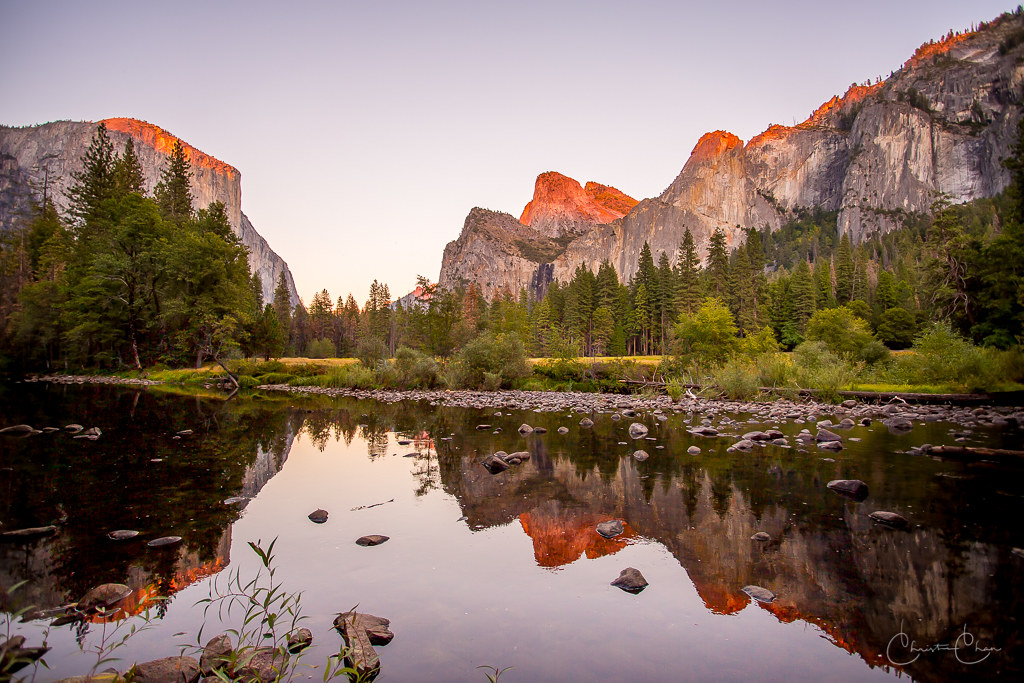A speech given at the University of Paris in January 2024.
Where I live, when someone mentions the Sorbonne, a sort of hush settles over the room. I can’t think of any place more appropriate for making the case that beauty should be a measured aspect of wellbeing than Paris. I think of France as a model for the beautiful things in life. You, not just in France, but all over Europe, know that, as John Muir put it, “everybody needs beauty as well as bread,” and the time to enjoy it.
Not far from here, the cathedral of Notre Dame testifies that your love of beautiful architecture dates back to at least the 12th Century. Versailles has drawn visitors since 1661. Even more remarkable, your love for art predates the Louvre by 30,000 years in Chauvet Cave, and by 17,000 at Lascaux. That’s art. What about nature’s beauty? In 1336, Petrarch became the first to climb mountains for the view when he ascended your Mont Ventoux and vividly described the dazzling glories of the Alps from its summit.
There seems to be little doubt that the beauty of nature, finely crafted architectural design, and art bring us pleasure. What I want to argue is that this pleasure is more than a momentary sensation and that beauty is a vital, but undervalued, source of wellbeing. As such, it deserves to be included in our indices, and is worthy of extensive continued research into its origins and contributions to wellbeing.
I believe that in our mechanistic age, when we count our blessings in monetary terms and still pay homage to the GDP, beauty is shortchanged. In place of Notre Dames, we get soulless, monotonous, utilitarian towers of steel, a kind of cash register architecture, amidst which increased cortisone levels signal our stress. Sadly, beauty is no longer part of our political dialogue. We seem too cool to speak of it, afraid of the emotions it triggers, especially in an era of aggressive masculinity, euphemistically referred to as “populism.” Yet beauty’s value can be measured both objectively in our brains and blood, and subjectively, though surveys.
Gallup’s Soul of the Community study, done in 2014, showed that aesthetic attraction was one of the three most important reasons for people’s attachment to the places where they live. In Britain, the perceived beauty of particular places has been surveyed using thousands of responses to photographs. Those responses show far more agreement than we are led to expect by critics who see beauty as purely subjective. An app called Mappiness asks people at random times how happy they feel. On average, people responding from places considered aesthetically pleasing report 20 percent higher levels of satisfaction. Our Seattle-based Happiness Alliance survey also asks people to rate the place where they live on a scale from beautiful to ugly. In 2023, about 8,000 people took the survey and answered the question about beauty.
Respondents who considered their communities attractive averaged a wellbeing score of 60.4 of 100. Those who did not averaged 40.0. These are remarkable numbers, and indeed, in every wellbeing domain, those who felt they lived in attractive surroundings scored considerably higher than those who did not. So we can see that the effect of immersion in natural or designed beauty ranks right up there with social connection as a factor in happiness and is related to both.
Indeed, as Harvard philosopher Elaine Scarry has documented, beauty makes us more tolerant, friendly, altruistic, and inclined toward justice. For example, in Philadelphia, hundreds of small interventions to beautify vandalized areas, vacant lots, and abandoned buildings resulted in a 30 percent drop in homicide and other crimes, a 58 percent reduction in fear of crime in the community and far less mental illness, while also reducing public expenditures. What’s not to like?
Many doctors now prescribe trips to a park—to savor nature’s beauty—as treatment for physical and mental stress among young people, particularly in low-income communities. Beauty also contributes to sustainability. For example, transportation experts in Vienna find that creating tree-lined walkways apart from busy streets increases pedestrian and cyclist use, while adding art to metro stations improves ridership.
The positive psychologist Abraham Maslow considered a need for beauty to be among the highest needs in his well-known hierarchy. He viewed beauty as an urgent need for many psychologically healthy adults and for virtually all healthy children. Maslow thought there were people whose need for beauty was so great they grew mentally ill without its presence in their lives.
The desire for beauty atrophies when unmet, but seldom dies completely. In the late nineteenth century, John Muir was taken by the fact that hungry and ragged street urchins in San Francisco, who had in some ways become hardened criminals, begged him for wildflowers when he returned from jaunts on nearby Mt. Tamalpais or the East Bay hills. However grim the surroundings they lived in, they had not lost their hunger for beauty.
It’s important to recognize that our sense of what is beautiful is not merely “in the eye of the beholder,” as those who ignore its importance claim. Rather, there is enough agreement about what we consider beautiful, especially with regards to nature, to suggest that it is one of the most universal instincts we share. Ecologist Carl Safina and others, including Darwin, have shown that this is a result of evolution. In animals it has reproductive value. The more beautiful organisms were more likely to find mates—from puffins to peacocks. In time life forms, through the survival value of more attractive genetic mutations, became ever more beautiful, allowing them to multiply and flourish.
And in the case of habitat, those most friendly to human survival were programmed into our minds as attractive and welcoming. They are life-affirming, and we know this deep in our subconscious. They suggest water, fertile land, an abundance of game, open space to see dangers before they burst upon us, and trees for hiding in when necessary. In our sharing of this beauty instinct, cultural differences are not large. But prior to the Enlightenment, rugged landscapes were more likely to be seen as dangerous than beautiful in most cultures.
In 1757, Burke pointed to the difference between pleasurable pastoral landscapes and those he called “sublime,” places less hospitable to life, like the rugged glaciated peaks of the Alps. But in 1786, two French climbers from Chamonix stood atop the highest of those peaks, Mont Blanc, and returned safely. After their triumph, hordes of climbers and tourists followed them into the wilderness. No longer an object of fear, the Alps beckoned with their beauty. At a deep level, we understood that their snows were the source of the waters of life. If you go to Chamonix today, or Zermatt, or Yosemite, you will find them almost overwhelmed by happy tourists of all races and nationalities, busy snapping photographs to carry that happiness home with them. It’s likewise in beautiful cities like Prague or Venice.
The usefulness of such beauty is precisely that it makes us happy. As we’ve seen, beauty grew in the service of all life and the biophilic instincts. But in the same way, ugliness too had survival value. When we see a strip mine, or a landfill, or a massive clearcut, or a beach poisoned by oil or plastic, we recoil from them, almost as if these wounds on the earth’s skin were invasions of our own flesh. Indeed, our sense that such ugliness is hostile to life may be even more universal than our agreement as to what is most beautiful. As such, the ugly reduces our contentment, increases our stress and puts us on edge. Where beauty energizes, ugliness enervates.
Certainly, our appreciation of what is beautiful can be broadened and deepened by exposure and education, especially where human design and art are concerned. It can be enhanced by the reduction of fear, and by a change in the pace of our lives that allows us more time to truly see what is around us. In another age of turmoil, the late 1960s, when this university was in the throes of a youthful rebellion led by Danny Cohn-Bendit, when the streets of Prague were filled with Russian tanks as Ukraine is today, and young people in Chicago were clubbed and gassed into submission for their efforts to end the Viet Nam war, the folksinger Phil Ochs remarked that “in such an ugly time, the true protest is beauty.”
Today, we face an even uglier time. Climate change and habitat loss threaten the long-term existence of humanity and countless other species. By the millions, refugees flee population pressures, drought, wars, and oppression. An obscene massacre in Israel leads in turn to a humanitarian nightmare in Gaza, threatening a wider war in the Middle East. And a nightmare of imperial hubris in Ukraine threatens the stability of all Europe. At the risk of appearing hopelessly naïve, might I suggest that even now, the true protest is beauty? A politics of beauty?
Such a hope is not without precedent. For ages, large scale efforts to create public beauty—what might be termed a politics of beauty—have been part of human history, though such efforts were originally imposed by despots. From the jungles of Southeast Asia and Meso-America to the Fertile Crescent of Mesopotamia, powerful leaders commanded massive armies of laborers to construct temples whose beauty still lures millions of visitors. From Angkor to Tikal to Thebes and Persepolis, artists of great skill and a flair for beauty chiseled their glyphs and statues into stone or painted them on plaster walls, treasures unexcelled for their grace even in modern times.
For Plato and the Greeks, beauty, truth, and goodness were inseparable values—the gods smiled on the exquisite forms of the Parthenon, and far-flung temples, columns, and amphitheaters. By the year AD 1000, communities throughout Europe began centuries-long projects to build magnificent cathedrals with soaring spires, phantasmagorical figures, and windows adorned by stained glass. Beauty as reverence. Their efforts were sustained by faith in God and the future; no one present at their birth would live to see their completion. It’s hard to imagine such endeavors in our age of instant gratification.
Such edifices were not limited to Christendom. In Spain, the Moors completed the Alhambra in 1238; its noble arches still draw beauty seekers to Granada. In 1420, the Chinese finished their Forbidden City, that massive palace with its charming pagodas and imperial gardens. Two centuries later, Islam built its stunning Blue Mosque and India unveiled its incomparable Taj Majal. All took shape before machine power, giant cranes, or skeletons of steel. While their styles were different, we moderns still honor their aesthetics. All of them will likely charm our descendants long after our monotonous glass boxes are imploded and forgotten.
Across the far corners of the pre-industrial globe, beauty was the sacred brought to life and the sea in which humans swam. The Renaissance saw a surge of artistic expression; its patrons were royalty and nobles, or the rising bourgeoisie, grown fat from textiles and finance. Wealth from the plunder of the New World flooded into Europe, soon to be lavished on an explosion of creativity. In cities such as Florence or Bruges, art could be found around every corner of their narrow winding streets, as it can be still.
In the fledgling United States, Thomas Jefferson, elected president in 1800, might well be considered the founding father of a democratic politics of beauty. Jefferson had a deep love for the arts and classical architecture he saw in Europe, especially during the five years he served here, as Ambassador to France. He argued that all communities “should be planned with an eye to the effect made up on the human spirit by being continually surrounded with a maximum of beauty.”
By the 1830s, many artists like the English-born Thomas Cole would be recording America’s natural wonders on canvas. The Transcendentalist Movement, led by such stalwarts as Margaret Fuller, Ralph Waldo Emerson, and Henry David Thoreau, cast philosophical darts at the industrial passions of the era. Having come west from Boston to Illinois’ Rock River in 1843, Margaret Fuller spoke sorrowfully of settlers rushing to the new land and contrasted their ways with those of the Indians, who “chose the most beautiful sites for their dwellings.” But of the settlers, she wrote, “They had no thought beyond satisfying the grossest material wants.” Apparently they hadn’t taken the happiness course at Harvard.
Thoreau was the harshest Transcendental critic. A nascent politics of beauty oozed from his very pores. He went to Walden Pond to savor nature’s beauty. “If a man walks in the woods for half a day for the love of them,” he practically shouted, “he is in danger of being regarded as a loafer. “But if that same man spends his whole day shearing off those woods and leaving Earth bald before her time, he is esteemed an industrious and enterprising citizen.” Never, perhaps, has the distinction between beauty and utility been stated more forcefully.
Among the other evidence of a politics of beauty in this period was its emphasis on nature and parks. In 1857, Frederick Law Olmsted began work on New York’s vast Central Park, an indication that even in a city devoted to commerce and consumption—or perhaps because of that utilitarian context—a new emphasis on access to nature and beautiful surroundings was taking root. Olmsted argued for parks “at points so frequent and convenient they would exert an elevating influence on all the people…cultivating taste and lessening that excessive materialism of purpose in which we are so cursedly absorbed.”
Yet the wealthy were also absorbed in the pursuit of nature’s beauty. Passenger pigeons were slaughtered to extinction so their feathers might adorn women’s hats. Rapidly, the most spectacular places, such as Niagara Falls, began to fill with tourists and tawdry commercial developments. Olmsted feared destruction of one of the most striking sights of all, Yosemite Valley with its granite cliffs and stunning waterfalls. Olmsted called Yosemite “the greatest glory of nature” and urged that it receive protected status. In May 1864, U.S. Senator John Conness of California proposed the legislation Olmsted wanted. On June 30, while the terrible Civil War still raged, and he was certainly preoccupied with other matters, President Lincoln signed the bill. Yosemite was turned over to the state of California to protect from commercial exploitation. A politics of beauty was finding roots in American soil, and the first “National Park” became a model for other nations.
Four years later, a young Scot, John Muir, turned up in San Francisco and set out to walk 300 miles to Yosemite Valley. In time, he would become the most eloquent apostle, the greatest advocate of beauty in United States history. Nature for Muir was both church and hospital, inspiring the soul and curing the stress-related diseases and cares of urban life.
In late July of 1893, a professor from Boston found herself atop 14,110-foot Pikes Peak in Colorado. As she surveyed the “purple mountain majesty” to the West and the endless “fruited plains” thousands of feet below to the East, the song “America the Beautiful” emerged from the mind of Katharine Lee Bates. Bates was awed by the diverse beauty of America but disappointed that our cities, institutions, and treatment of each other failed to match the lovely landscape surrounding her. “America, America, may God thy gold refine,” she urged. She asked Americans to view greatness differently, to see wealth as more than money, and to imagine a country where our cities, then filled with destitute workers, were as lovely as our mountains, fields, and oceans. Bates would later visit France and find herself enchanted by your Alps. On seeing them, she declared, “Mont Blanc! O beautiful beyond all dream…the adoration of the gazing eye. Evermore must our poor life be nobler than before.” The power of beauty. Bates, who is the subject of the film I am producing now, was not alone among nineteenth-century Americans in wanting lovely cities.
Founded in 1899, the City Beautiful Movement challenged the haphazard, commercially driven development of American cities in the name of a more elegant architecture and, especially, the re-introduction of nature—in the form of parks—into the city. While it was the middle-class which demanded them, the parks and public places that City Beautiful created were symbols of democracy. Olmsted had in fact declared that the greatest benefit of his parks would be to the poor, since they were otherwise most excluded from beauty and healthful environments. For all their grime and crowding, the recently electrified cities had exerted a pull on the youth of the countryside. As Sophie Tucker’s popular World War I song put it, “How Ya Gonna Keep ‘em Down on the Farm (After They’ve Seen Paree)?”
One answer was a campaign called “Country Life” to make America’s small towns more beautiful places to live. Even today, American towns that have paid attention to beauty are more likely to attract and retain new residents. I suspect that’s true in Europe too. In England, the fight for beauty began earlier. Throughout the nineteenth century, critics from different perspectives bemoaned the industrial ugliness that was Victorian England. “Ill fares the land,” Goldsmith wrote, “where wealth accumulates and men decay.” In 1844, a chastened Wordsworth asked, “Is then no nook of English ground safe from rash assault?” “Men,” wrote John Ruskin, “wherever they can reach, destroy all beauty. They seem to have no other desire or hope but to have large houses and to be able to move fast. Every perfect and lovely spot which they can touch, they defile.” In response, these Romantics and their allies launched campaigns to preserve and enhance England’s beauty, as Fiona Reynolds documents.
In Europe, interest in beauty even had its own youth movements. Beginning at the end of the nineteenth century, especially in Germany, young people fled polluted cities for the open county, garlanded in flowers and singing to flutes and guitars. Germany’s Wandervogel, with its lively groups of boys and girls camping together, began in Berlin’s suburbs in 1896 and resumed after World War I. American visitors in the 1920s saw Wandervogel’s “revolt of youth” as pointing the way forward to a New Age of international harmony and world peace. But the optimism was short-lived. Less than two decades after the Great War, Germany’s “wandering birds” had been either crushed or co-opted by the Nazis, their saunters in the woods replaced by marches to the front, guitars transformed into rifles.
In my country, beauty’s true Renaissance came in the 1960s, spurred in part by a back-to-the-land counterculture much like Wandervogel. The Sixties were a tumultuous decade, rocked by struggles and shaped by the will and skill of President Lyndon Johnson. Much of Johnson’s memory is clouded by his disastrous and divisive failure: the war in Viet Nam. But Johnson’s legacy includes flashes of nobility–the Civil Rights Act, the War on Poverty, Head Start and Medicare. Tucked away among these crusades, and now almost forgotten, was another dream he hoped to be remembered for, a dream of a more beautiful United States, which the world would respect, not for “the quantity of its goods” but for “the quality of its goals.”
Johnson wished to unify the US—polarized then as now—around stewardship of its beauty. Johnson was deeply influenced by his Interior Secretary Stewart Udall, an ardent conservationist. Udall took Johnson’s wife Lady Bird on a rafting trip through the Grand Tetons in August 1964. During the trip, he convinced her of the necessity of strong new environmental protections, starting with an emphasis on beauty. She brought his message to her husband. He agreed with her. And he was clear: the beautiful land he dreamed of was not meant to be a luxury for the fortunate, but a birthright for every American.
“Beauty,” Johnson said, “must not be just a holiday treat, but a part of our daily life” and provide “equal access for rich and poor, Negro and white, city dweller and farmer.” The value of beauty “does not show up in the Gross National Product,” Johnson explained, “but it is one of the most important components of our true national income, not to be left out because statisticians cannot calculate its worth.” He understood what we are about here today.
More than half a century later, it’s time to take beauty seriously again. If a Green New Deal might make us more sustainable, a Beauty New Deal could bring us together in pursuit of a proven contributor to happiness. Such a New Deal might include:
- Greater public support for artists, writers, poets, and performers.
- Expanding parks, wilderness areas, and open spaces, while strengthening protections from commercial encroachment.
- Establishing an International Civilian Conservation Corps for beautification and environmental restoration projects, funded by a global capital transaction tax.
- Hosting a United Nations Summit on Natural and Architectural Beauty.
- Encouraging urban beautification, including planting millions of flowering and shade trees.
- Supporting “Renaissance Zones” using grants and tax incentives for beauty-led economic development in poor communities.
- And launching an international, multi-university, cross-disciplinary research project on the value of beauty, followed by a communications campaign to circulate its findings.
Such a program could bring us together across current lines of polarization. I believe this because those on the Left like their gardens as much as those on the Right, and those on the Right appreciate the beauty of nature and parks as much as their counterparts on the Left. We get what we measure. We get more stuff whether it makes us happy or not because we measure it. So it will be with beauty. Dostoevsky said that beauty would save the world. So did Solzhenitsyn in his Nobel lecture. I am not sure they are right but we should try to find out. No one can guarantee that a politics of beauty will save the world. But it’s obvious that nothing else is working very well, so it’s worth a try.
Image via Flickr





